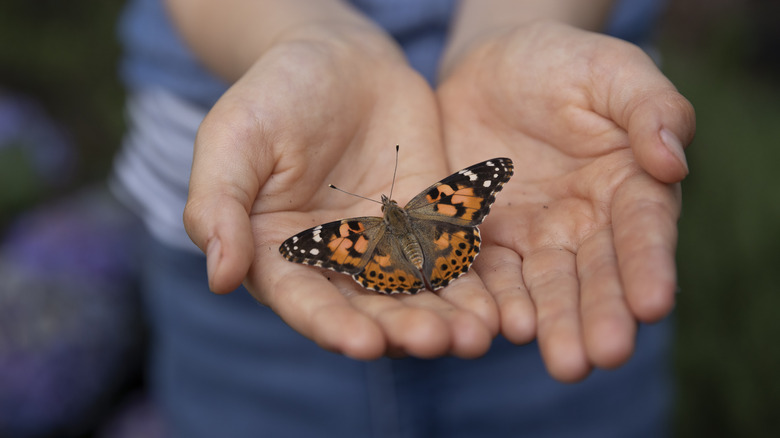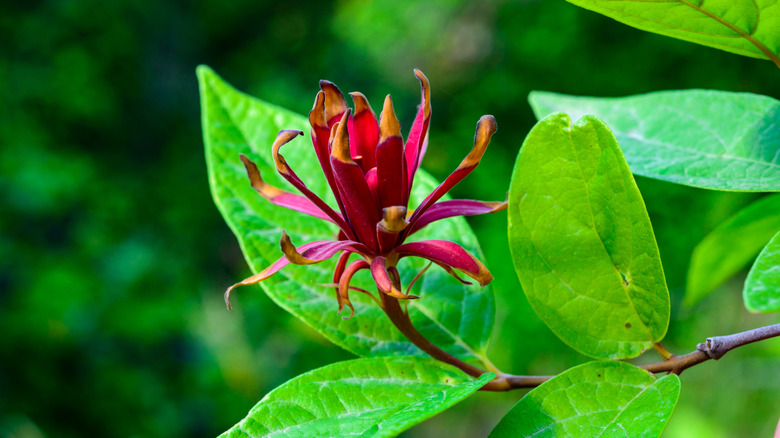The Fast-Growing Shrub That Birds, Butterflies And Bees Will Flock To Your Yard For
Gardening is a hobby for patient people. There's not a lot of instant gratification with this pastime, but when sprouts finally appear and buds eventually open, the reward is huge. Still, if you're impatient and/or have a short growing season, it's not a bad idea to go with fast-growing plants that pay off in a jiff — or at least a relative, garden-version of a jiff. Sweetshrub (Calycanthus) is aptly named, but you may know it under another moniker. This fruity-scented flowering bush, also known as spicebush, allspice, and strawberry bush, will make your yard smell amazing. Most varieties are native to the eastern portion of North America. While the buds will please your nose, the flowers attract pollinators like flies, beetles, butterflies, and bees. Some people also report seeing hummingbirds feed on the flowers. However, it's most useful to birds in the form of habitat. Its dense branches and foliage make snug and secure nesting sites.
Sweetshrub flowers are reminiscent of magnolias and come in white, yellow, and gradients of red. Its colors and scents, plus enthusiastic growth, are tempting enough to convince you to fit a sweetshrub into your outdoor space, but the fact that it's also very easy to care for may send you shopping ASAP. It's deer-resistant and doesn't fall prey to many pests or diseases as long as you set it up in ideal growing conditions. Be aware that eating the seeds in large quantities can be toxic to humans and pets.
Welcoming sweetshrub to your yard
The best spots to plant sweetshrub for fast growth have partial shade and moist soil. In prime conditions, the shrub can add between 12 and 18 inches of growth per year. It will live happily in full sun and dry soil, but it won't grow as large. Not only does sweetshrub grow quickly, but it also reaches prodigious proportions. Some sweetshrubs top out at 10 feet tall and 12 feet wide, but smaller ones max out around 5 feet by 4 feet. Luckily, there are enough varieties to choose from to fit most yards in zones 4 to 9. Still, it might not be the best shrub to plant if you have a small yard.
Sweetshrub makes a pleasant addition to the border of your yard, a fragrant enhancement to a sitting area, or to control erosion on a slope. Once you've scouted out potential planting locations, evaluate the soil there; it needs to be well-draining and preferably loamy and moist. If the soil's not perfect, add a bit of compost before planting. Make the hole twice as wide as the root ball, and be sure to water thoroughly after planting. Young plants need to stay consistently hydrated in order to establish themselves well. A layer of mulch around the base of the bush will help maintain moisture. If the soil isn't great, another tip is to give the shrub some slow-releasing fertilizer. Do this every spring, as well. Sweetshrub is pretty hardy, but if you live in a very cold area, covering the bush and mulching its base thickly in winter is a smart plan.

